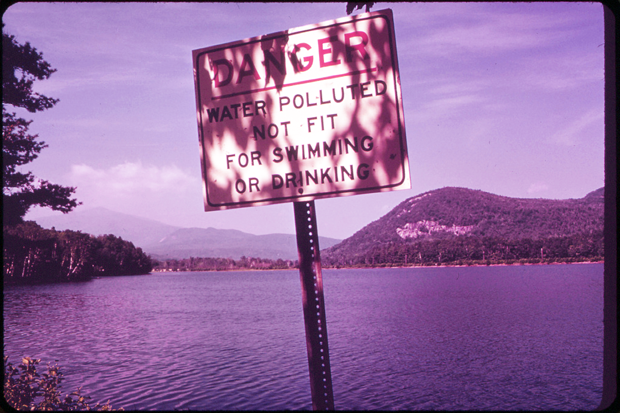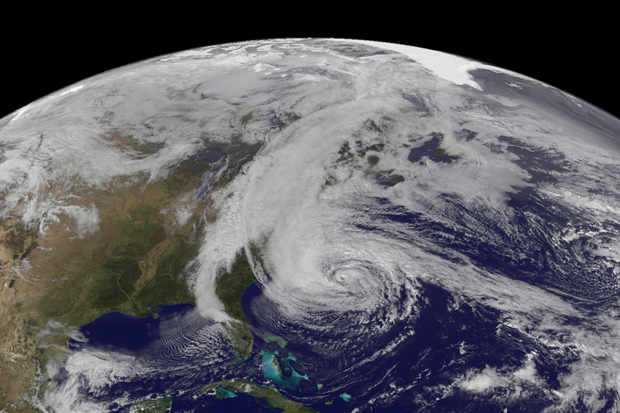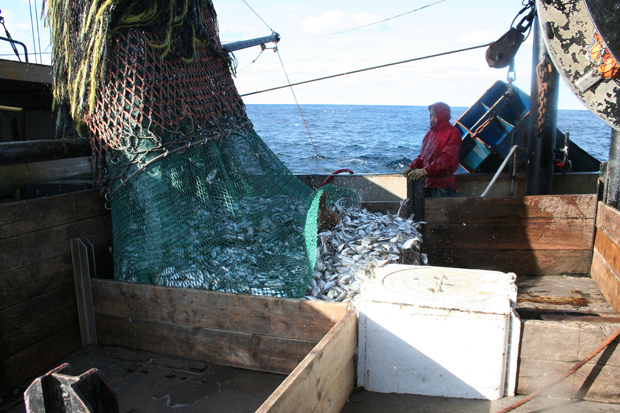Five successes to celebrate this Earth Day
So far, 2016 is poised to be another record-breaking year. Year to date (January-March), the average temperature for the globe was 2.07 degrees F over the 1981-2010 average. With statistics like this, it’s easy to feel forlorn about the state of the planet, but it’s also important to remember the strides we’ve made to improve our planet.
The first Earth Day
In 1969, the Cuyahoga River off the coast of Lake Erie became so polluted that it caught fire. Just a few months prior, an oil rig leaked millions of gallons of oil off the coast of California. These incidents, and others, garnered national attention and then-Senator Gaylord Nelson organized a nationwide “teach-in” about environmental issues on April 22, 1970—what would become the very first Earth Day. Nearly 10 percent of the country’s population participated in the day, including more than 2,000 colleges and universities, 10,000 public schools, and 20 million citizens.
Here are five big successes in the 46 years since the first Earth Day.
We’ve expanded our marine protected areas
The Papahānaumokuākea Marine National Monument is not only the largest conservation area in the U.S., it's one of the largest marine conservation areas in the world. This coral reef lagoon is at Shark Island, part of the Hawaiian Islands National Wildlife Refuge and the Papahānaumokuākea Marine National Monument. Image Credit: Lindsey Kramer/USFWS.
While President Teddy Roosevelt officially established our country’s first Marine Protected Area (MPA) in 1903, it wasn’t until the National Marine Sanctuaries Act of 1972 that the United States began to focus on protecting more of its marine areas. Today, the United States has more than 1,700 MPAs encompassing open ocean habitats, coastal areas, estuaries, and the Great Lakes. In 2014, President Barack Obama expanded the Pacific remote Islands Marine National Monument to six times its original size, creating the world’s largest marine reserve at 490,000 square miles. More than half the nation’s marine waters are designated as some form of MPA, and six percent of our waters are highly protected areas where extractive uses are not allowed.While each protected area is unique, they all share the same goal: the long-term conservation of coastal and ocean ecosystems and the resources and services they support. Learn more about marine protected areas.
Our air is cleaner
Industrial smog blacks out homes adjacent to North Birmingham Pipe Plant. This is the most heavily polluted area of the city. 1972. Photo: LeRoy Woodson, Courtesy: U.S. National Archives via Wikimedia Commons.
The passage of the Clean Air Act of 1970 was a huge accomplishment connected to the first Earth Day. The law authorized the development of comprehensive federal and state regulations to limit emissions from both industrial sources and from automobiles. From 1970 to 2014, combined national emissions of six common pollutants--carbon monoxide, ozone, lead, nitrogen dioxide, particulate matter, and sulfur dioxide--dropped an average of 69 percent. Twenty years after the Act went into effect, lawmakers signed the Clean Air Act 1990 Amendments, which set the stage for protecting the ozone layer, reducing acid rain and toxic pollutants, and improving air quality and visibility. Learn more about the Clean Air Act.
Our waterways are cleaner
Polluted Androscoggin River in the "Shelburne Birches" Area near the Maine-New Hampshire Boundary. 1973. Photo: Charles Steinhacker, Courtesy: U.S. National Archives.
Building on 1948’s Federal Water Pollution Control Act, the Clean Water Act was passed in 1972. This law gave the EPA the authority to regulate pollution discharge into our waterways. Often considered America’s most robust environmental law, the Clean Water Act’s objective is to “restore and maintain the chemical, physical, and biological integrity of the nation’s waters.” Under the Clean Water Act, we have doubled the number of waterways that are safe for swimming and fishing and made disasters like the 1969 burning of the Cuyahoga River unimaginable. We look forward to celebrating the restoration of even more waterways on future Earth Days. Learn more about the Clean Water Act.
We’re much better at predicting extreme events
Hurricane Sandy as seen from NOAA's GOES-13 satellite on October 28, 2012. Credit: NOAA/NASA.
We can predict storms better and further into the future. In 1970, the average 48-hour track error—the length of coast where a hurricane might make landfall while it’s still two days away—was 300 nautical miles. In 2015 it was 60 nautical miles. That’s an improvement of accuracy roughly the size of the state of New York. The North American Multi-Model Ensemble (NMME), a major seasonal prediction system that combines forecasts from the best climate models in the U.S. and Canada, is now routinely used for drought forecasts. On average, NMME has increased our skill to predict seasonal precipitation forecasts by about 15 percent compared to the next best model. Learn more about Hurricane predictions. Learn more about NMME.
We’ve made progress reducing overfishing
Butterfish stocks from Gulf of Maine to Cape Hatteras were rebuilt in 2014. Photo Credit: NOAA.
The Magnuson-Stevens Fishery Conservation and Management Act celebrated its 40th anniversary this year. The law, passed on April 13, 1976, is the primary law governing fishing in the United States. Extending national waters to 200 miles and establishing eight regional fishery management councils with the mission of conservation and management, the Magnuson-Stevens Act has brought us where we are today—with overfishing and overfished stocks near all-time lows. Since 2000, 39 fish stocks have been rebuilt and success stories come from every coastal region in the country. The NOAA’s National Marine Fisheries Service Status of the Stocks 2015, Annual Report to Congress, only 9 percent of fish stocks are on the overfished list. This is down from nearly 45 percent in 1997. Learn more about the Magnuson-Stevens Act.




